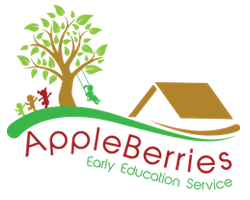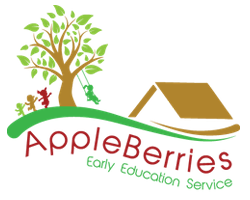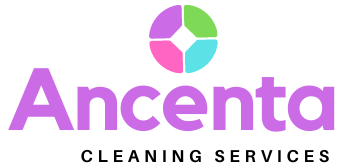Title Page
-
Service conducted
-
Conducted on
-
Prepared by
Assessment and Rating Pre-questionnaire
Quality Area 1
Approved Learning Framework
-
How are the learning outcomes promoted through the program and children’s experiences?
Child-Centered
-
How educators’ current understanding of individual children’s knowledge, strengths, ideas, culture, abilities and interests, and how they have developed this understanding of each child?
-
How educators support children to actively participate in experiences and guide their own learning?
Program Learning Opportunities
-
How children are involved in program decision-making, contributing to the learning environment, assisting in everyday routines and transitions including menu planning and food preparation?
Intentional Teaching
-
How intentional teaching strategies are used to extend children’s play, including spontaneous experiences?
Responsive Teaching and Scaffolding
-
How do educators plan learning environments with appropriate levels of challenge, where children are encouraged to explore, experiment and take appropriate risks in their learning?
Child directed Learning
-
How do educators support opportunities for children’s decision-making that are appropriate for the child’s age?
Assessment and Planning Cycle
-
How do educators analyse the information that is gathered about each child to make assessments of each child’s progress towards specific learning outcomes?
Critical Reflection
-
How educator’s reflective practice, including critical reflection, is used as an ongoing process in the service?
-
How are children’s comments about their experiences of the program recorded and considered as part of the reflection process?
Information for Families
-
How do educators seek feedback from families about how they access documentation about their child and whether it is useful, understandable and meaningful to them?
-
How arrangements are made to exchange information about the child with families at mutually convenient meeting times?
Quality Area 2 - Children's Health and Safety
Wellbeing and Comfort
-
How does the service provide opportunities for families to communicate changes in children’s routines to educators?
Health Practices and Procedures
-
How the service accesses information from recognised authorities about current health, hygiene and safety guidelines and how this information is used to inform policies, procedures and practices?
-
How families are advised of cases of infectious illnesses in the service, including information about the nature of the illness, incubation and infectious periods and the service’s exclusion requirements for the illness?
Healthy Lifestyle
-
How does the service maintain a balance between spontaneous and planned physical activity, and passive and active experiences, for all children?
-
How does the service consider children’s voices in planning physical activities, including opportunities for physical play that support the abilities, diversity and backgrounds of each child attending the service?
Supervision
-
How does the service ensure that supervision arrangements are flexible to allow supervision of individuals or small groups of children, such as when children are sleeping or indoor and outdoor experiences are concurrently offered to children?
Incident and Emergency Management
-
How does the service communicate information to families about the service’s emergency procedures and plans to manage incidents?
Child Protection
-
How are new or relieving educators as well as other staff members made aware of their responsibilities in relation to child protection and the particular protection needs of individual children in the service?
Quality Area 3 – Physical environment
Fit for Purpose
-
How does the design of the environment promote and foster children’s learning, development and wellbeing?
Upkeep
-
What is the schedule for cleaning all toys and equipment used by children?
Inclusive Environment
-
How do educators set up the environments to manage the balance of active and quieter spaces for play, and responds to the individual requirements of all children throughout the day?
Resources Support Play-Based Learning
-
What are the strategies used to engage with families and children to ensure their views are considered and incorporated in the selection and organisation of materials, equipment and resources at the service?
Environmentally Responsible
-
What are the strategies used to support every child to engage in quality experiences in the natural environment?
Quality Area 4 – Staffing arrangements
Organisation of Educators
-
How the service provides non-contact time to enable educators to undertake tasks such as: programming, meeting with families, meeting with inclusion support professionals, networking with relevant organisations, such as other education and care services and local schools?
Continuity of Staff
-
How the service helps to build staff cohesion and pride in the service?
-
How performance development processes provide educators with targeted feedback that supports continuity?
Professional Collaboration
-
What is the service’s approach to using particular strengths, talents and interests of individual educators?
Professional Standards
-
How up-to-date information is communicated to educators (for example, service/employer information and changes or updates that impact on practice and regulatory compliance)?
Quality Area 6 – Collaborative partnerships with families and communities
Engagement with the Service
-
What are the provisions made to support families during the enrolment and orientation process?
-
How families, including extended family members, are able to contribute to the operation of the service and be involved in an advisory, consultative or decision-making role?
Parents views are respected
-
What are some of the strategies used by the service to facilitate shared decision-making with families and to respect families’ requests?
Families are Supported
-
How the families are sensitively supported and encouraged to access local community services and resources that may be relevant to them?
Transitions
-
What are the strategies to ensure that children are supported when:
-
• Moving from one group to another
-
• Moving between settings
-
• Returning to the service after an absence
-
• Transitioning between routines and experiences
Active and Participation
-
How the service ensures that the educational leader and educators access support and/or participate in professional development to build the skills and expertise necessary to support the inclusion of children with specific health, cultural or developmental requirements?
-
How educators identify potential barriers to inclusion and ensure the environment and routines are adapted appropriately to facilitate the participation of all children?
Community Engagement
-
How does the service build connections between the service and the local community?
-
How does the service use community resources to improve the educational program and provide quality learning experiences for each child?
-
How the educational leader, nominated supervisor, educators and co-ordinators raise awareness of Aboriginal and Torres Strait Islander and/or other local communities?
Quality Area 7 – Governance and Leadership
Service Philosophy and Purpose
-
How a shared understanding of the service’s statement of philosophy underpins practice and decision-making for both individual educators and the service, including the planning cycle and approaches to equity and inclusion?
-
How educators and families are encouraged to be meaningfully involved in reviews of the service’s statement of philosophy?
Management Systems
-
The processes in place at the service for reviewing and updating records and information on a regular basis?
-
The service’s practice in relation to the retention and disposal of records?
-
What are the human resource management procedures including recruitment and selection, leave, rosters and access to training and development?
-
The service’s processes for notifying the regulatory authority of required matters?
-
The management of any complaints or grievances lodged with the service?
-
The ways in which families are encouraged to contribute to the development and review of policies?
Roles and Responsibilities
-
What is the induction processes for all educators and staff, including relief educators?
Continuous Improvement
-
How the educational leader supports educators to engage in reflective practice to refine strategies and to create and sustain improvements?
-
What are the processes for regularly updating the Quality Improvement Plan and identifying new goals and strategies for quality improvement?
Educational Leadership
-
How the educational leader assists educators to promote children’s learning and development and, when necessary, facilitate discussions with families?
-
How the service supports the educational leader to have opportunities for discussions with educators, provide mentoring, lead reflective practice, and realise the intent of their role?
Development of Professionals
-
How the service’s performance review process contributes to planning for educators’ learning and further development, and how the service supports this process?
-
How performance processes identify strengths and areas for development, and how these areas for development are addressed?














